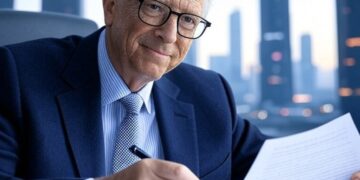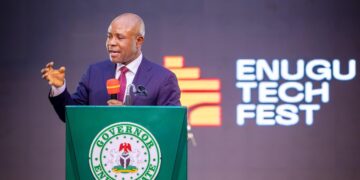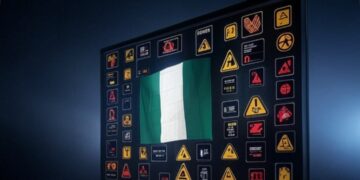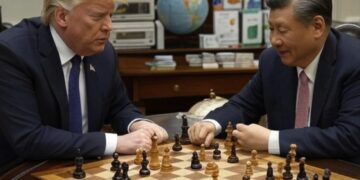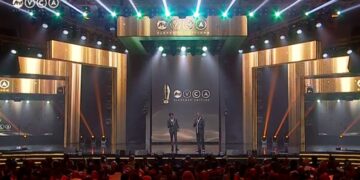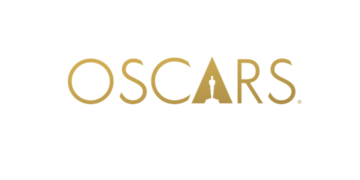For centuries, the Church—here referring broadly to institutionalized Christianity across its denominations—has played a dual role in society: a source of moral authority and a partner, or sometimes adversary, to the state. Yet a bold claim persists in certain circles: that the Church stands as the single greatest barrier to challenging oppression by governments. This assertion demands scrutiny. Is the Church truly the linchpin holding back resistance to unjust rule, or is its role more nuanced, shaped by time, place, and power dynamics? For stakeholders—those invested in governance, community welfare, and social justice—this question is not merely academic. It strikes at the heart of how we understand influence, resistance, and the levers of change.
A Historical Dance with Power
To assess the Church’s role, we must first look backward. History offers a kaleidoscope of examples where the Church has either bolstered or undermined oppressive regimes. In medieval Europe, the Catholic Church was not just a spiritual institution but a political juggernaut. It crowned kings, collected tithes that rivaled state taxes and wielded ex-communication as a weapon to keep rulers in line—or to punish those who defied its will. When monarchs oppressed their subjects, the Church often stood as a silent partner, sanctifying divine right and preaching obedience. The Peasants’ Revolt of 1381 in England, for instance, saw rebels rise against feudal burdens, only to face sermons urging submission to earthly authorities, rooted in Romans 13:1: “Let every person be subject to the governing authorities.”
Yet the Church was not always a monolith of compliance. The Protestant Reformation of the 16th century fractured its unity and, in doing so, challenged the intertwined authority of Church and state. Reformers like Martin Luther initially aimed to purify faith, not topple governments, but their ideas sparked rebellions—some crushed brutally, others planting seeds for later democratic movements. The Church split between Catholic and Protestant factions, became both a tool of oppression and a rallying cry against it, depending on who held the reins.
Fast forward to the 20th century, and the pattern repeats with modern twists. In Spain under Francisco Franco, the Catholic Church aligned itself with the fascist regime, blessing its authoritarian grip in exchange for privileges and influence. Priests preached against dissent, framing obedience to Franco as a Christian duty. Meanwhile, in Nazi Germany, the “German Christians” movement twisted theology to support Hitler, while the Confessing Church, led by figures like Dietrich Bonhoeffer, resisted—often at great cost. These examples reveal a truth: the Church’s stance on oppression is not fixed. It can sanctify the oppressor or inspire the oppressed, depending on its incentives and leadership.
The Pacification Paradox
Why, then, might some see the Church as the biggest obstacle to challenging governmental oppression? One answer lies in its capacity to pacify. Christianity’s core teachings—humility, patience, forgiveness—can double as a sedative for the downtrodden. “Turn the other cheek,” Jesus instructs in Matthew 5:39. “Render unto Caesar what is Caesar’s,” he says in Mark 12:17. These verses, taken at face value, suggest a posture of endurance rather than resistance. For centuries, clergy have leaned on such texts to counsel against rebellion, urging flocks to await divine justice rather than demand earthly change.
This pacification has practical effects. When people believe their suffering is a test of faith or that their reward lies beyond this life, the urgency to confront tyrants can wane. In colonial contexts, European powers often paired missionary work with conquest, using the Church to soften resistance. In 19th-century Africa, for example, missionaries preached submission to colonial authorities as God’s will, even as those authorities plundered resources and enslaved populations. The Church’s message of peace, while noble in intent, could—and did—serve as a brake on revolutionary fervor.
Yet this pacification is not absolute. The same scriptures that counsel patience also demand justice. Micah 6:8 calls believers to “do justice, love mercy, and walk humbly with your God.” The Book of Exodus narrates a God who liberates slaves from Pharaoh’s grip. These threads have fueled movements against oppression, from the abolition of slavery to the civil rights struggle. The paradox is that the Church’s teachings are a double-edged sword—capable of quieting dissent or igniting it, depending on interpretation and context.
The Church as State’s Ally
When the Church aligns with the state, its role as an obstacle grows more pronounced. This alliance often stems from mutual benefit: governments gain legitimacy, while the Church secures protection, funding, or cultural dominance. In Russia today, the Orthodox Church has forged a tight bond with Vladimir Putin’s regime. Patriarch Kirill has framed the government’s actions—be it crackdowns on dissent or the war in Ukraine—as a defense of Christian values against a decadent West. This rhetoric not only justifies oppression but cloaks it in moral authority, making resistance seem sinful as well as dangerous.
Historically, such partnerships have been common. In apartheid South Africa, the Dutch Reformed Church provided theological cover for racial segregation, arguing it was divinely ordained. Dissidents faced not just police batons but sermons branding them as heretics. When the Church becomes the state’s cheerleader, it can muddy the moral waters, convincing believers that challenging oppression is a betrayal of faith itself.
Yet these alliances are not universal. In Poland under communist rule, the Catholic Church was a bulwark against Soviet oppression, offering sanctuary to dissidents and amplifying calls for freedom. The election of Pope John Paul II in 1978 galvanized this resistance, proving that the Church could be a thorn in the state’s side when its interests diverged from those in power. The lesson? Alignment with the state amplifies the Church’s obstructive potential, but it’s not an inevitable stance.
A Force for Resistance
To call the Church the biggest obstacle overlooks its counterhistory as a force for liberation. The abolitionist movement in the United States leaned heavily on Christian ethics. Quakers and evangelical preachers thundered against slavery, citing biblical calls to free the oppressed. In the 20th century, Martin Luther King Jr. wielded the Church as a battering ram against Jim Crow laws, blending prophetic zeal with grassroots organizing. His Letter from Birmingham Jail, penned in 1963, chastised moderate clergy for their timidity but also showcased the Church’s potential to lead when stirred to action.
Liberation theology, born in Latin America in the 1960s, took this further. Priests like Gustavo Gutiérrez argued that God sides with the poor and oppressed, urging the Church to confront unjust governments head-on. In El Salvador, Archbishop Óscar Romero became a voice for the voiceless, denouncing military abuses until his assassination in 1980. These cases show the Church not as an obstacle but as a catalyst, providing moral clarity, community networks, and a transcendent cause to rally around.
The Modern Landscape
Today, the Church’s influence varies wildly. In secularizing regions like Western Europe, its voice has faded, drowned out by media, technology, and state power. In the United States, evangelical megachurches wield political clout, often aligning with conservative agendas that critics say prop up systemic inequities. In parts of Africa and Latin America, Pentecostal growth has birthed both prosperity-gospel empires that sidestep structural issues and grassroots movements that challenge corrupt rulers.
Consider Uganda, where the Church—both Anglican and Catholic—holds sway over millions. Clergy have at times criticized government overreach, as in the 2011 protests against rising fuel prices, but they’ve also stayed silent on issues like President Museveni’s decades-long grip on power. The Church’s ambivalence reflects a broader truth: its stance on oppression depends on its leaders, its flock, and the risks it’s willing to take.
Weighing the Claim
So, is the Church the biggest obstacle to challenging governmental oppression? The evidence suggests it’s a contender but not the champion. Governments themselves wield far deadlier tools—armies, surveillance, economic control—that dwarf the Church’s influence. Secular ideologies, from nationalism to neoliberalism, often outmuscle religious narratives in shaping public will. And in an age of information overload, social media and state propaganda can sway minds faster than any sermon.
The Church’s real power lies in its ability to shape conscience. When it preaches passivity or blesses tyrants, it can sap the moral energy needed to resist. But when it turns prophetic, it can light a fire under the oppressed. Its role is less about raw strength and more about leverage—amplifying or dampening the will to fight, depending on its alignment.
Implications for Stakeholders
For those steering policy, business, or community action, the Church’s dual nature offers both challenge and opportunity. As a stakeholder, you might ask: How is the Church shaping the narrative in my context? Is it a brake on progress or a potential ally? In regions where it holds sway, engaging its leaders—pushing them toward justice rather than complacency—could shift the tide. In secular spaces, its decline might leave a vacuum that other forces, not all benign, will fill.
The Church is not the immovable object some claim. It’s a player in a larger game, its influence waxing and waning with circumstance. To see it as the biggest obstacle is to overstate its reach and underplay its complexity. Governments oppress with or without its blessing; the real question is whether the Church will stand with the oppressed or watch from the sidelines. For stakeholders, that’s a dynamic worth watching—and, perhaps, shaping.
A Historical Dance with Power
To assess the Church’s role, we must first look backward. History offers a kaleidoscope of examples where the Church has either bolstered or undermined oppressive regimes. In medieval Europe, the Catholic Church was not just a spiritual institution but a political juggernaut. It crowned kings, collected tithes that rivaled state taxes and wielded ex-communication as a weapon to keep rulers in line—or to punish those who defied its will. When monarchs oppressed their subjects, the Church often stood as a silent partner, sanctifying divine right and preaching obedience. The Peasants’ Revolt of 1381 in England, for instance, saw rebels rise against feudal burdens, only to face sermons urging submission to earthly authorities, rooted in Romans 13:1: “Let every person be subject to the governing authorities.”
Yet the Church was not always a monolith of compliance. The Protestant Reformation of the 16th century fractured its unity and, in doing so, challenged the intertwined authority of Church and state. Reformers like Martin Luther initially aimed to purify faith, not topple governments, but their ideas sparked rebellions—some crushed brutally, others planting seeds for later democratic movements. The Church split between Catholic and Protestant factions, became both a tool of oppression and a rallying cry against it, depending on who held the reins.
Fast forward to the 20th century, and the pattern repeats with modern twists. In Spain under Francisco Franco, the Catholic Church aligned itself with the fascist regime, blessing its authoritarian grip in exchange for privileges and influence. Priests preached against dissent, framing obedience to Franco as a Christian duty. Meanwhile, in Nazi Germany, the “German Christians” movement twisted theology to support Hitler, while the Confessing Church, led by figures like Dietrich Bonhoeffer, resisted—often at great cost. These examples reveal a truth: the Church’s stance on oppression is not fixed. It can sanctify the oppressor or inspire the oppressed, depending on its incentives and leadership.
The Pacification Paradox
Why, then, might some see the Church as the biggest obstacle to challenging governmental oppression? One answer lies in its capacity to pacify. Christianity’s core teachings—humility, patience, forgiveness—can double as a sedative for the downtrodden. “Turn the other cheek,” Jesus instructs in Matthew 5:39. “Render unto Caesar what is Caesar’s,” he says in Mark 12:17. These verses, taken at face value, suggest a posture of endurance rather than resistance. For centuries, clergy have leaned on such texts to counsel against rebellion, urging flocks to await divine justice rather than demand earthly change.
This pacification has practical effects. When people believe their suffering is a test of faith or that their reward lies beyond this life, the urgency to confront tyrants can wane. In colonial contexts, European powers often paired missionary work with conquest, using the Church to soften resistance. In 19th-century Africa, for example, missionaries preached submission to colonial authorities as God’s will, even as those authorities plundered resources and enslaved populations. The Church’s message of peace, while noble in intent, could—and did—serve as a brake on revolutionary fervor.
Yet this pacification is not absolute. The same scriptures that counsel patience also demand justice. Micah 6:8 calls believers to “do justice, love mercy, and walk humbly with your God.” The Book of Exodus narrates a God who liberates slaves from Pharaoh’s grip. These threads have fueled movements against oppression, from the abolition of slavery to the civil rights struggle. The paradox is that the Church’s teachings are a double-edged sword—capable of quieting dissent or igniting it, depending on interpretation and context.
The Church as State’s Ally
When the Church aligns with the state, its role as an obstacle grows more pronounced. This alliance often stems from mutual benefit: governments gain legitimacy, while the Church secures protection, funding, or cultural dominance. In Russia today, the Orthodox Church has forged a tight bond with Vladimir Putin’s regime. Patriarch Kirill has framed the government’s actions—be it crackdowns on dissent or the war in Ukraine—as a defense of Christian values against a decadent West. This rhetoric not only justifies oppression but cloaks it in moral authority, making resistance seem sinful as well as dangerous.
Historically, such partnerships have been common. In apartheid South Africa, the Dutch Reformed Church provided theological cover for racial segregation, arguing it was divinely ordained. Dissidents faced not just police batons but sermons branding them as heretics. When the Church becomes the state’s cheerleader, it can muddy the moral waters, convincing believers that challenging oppression is a betrayal of faith itself.
Yet these alliances are not universal. In Poland under communist rule, the Catholic Church was a bulwark against Soviet oppression, offering sanctuary to dissidents and amplifying calls for freedom. The election of Pope John Paul II in 1978 galvanized this resistance, proving that the Church could be a thorn in the state’s side when its interests diverged from those in power. The lesson? Alignment with the state amplifies the Church’s obstructive potential, but it’s not an inevitable stance.
A Force for Resistance
To call the Church the biggest obstacle overlooks its counterhistory as a force for liberation. The abolitionist movement in the United States leaned heavily on Christian ethics. Quakers and evangelical preachers thundered against slavery, citing biblical calls to free the oppressed. In the 20th century, Martin Luther King Jr. wielded the Church as a battering ram against Jim Crow laws, blending prophetic zeal with grassroots organizing. His Letter from Birmingham Jail, penned in 1963, chastised moderate clergy for their timidity but also showcased the Church’s potential to lead when stirred to action.
Liberation theology, born in Latin America in the 1960s, took this further. Priests like Gustavo Gutiérrez argued that God sides with the poor and oppressed, urging the Church to confront unjust governments head-on. In El Salvador, Archbishop Óscar Romero became a voice for the voiceless, denouncing military abuses until his assassination in 1980. These cases show the Church not as an obstacle but as a catalyst, providing moral clarity, community networks, and a transcendent cause to rally around.
The Modern Landscape
Today, the Church’s influence varies wildly. In secularizing regions like Western Europe, its voice has faded, drowned out by media, technology, and state power. In the United States, evangelical megachurches wield political clout, often aligning with conservative agendas that critics say prop up systemic inequities. In parts of Africa and Latin America, Pentecostal growth has birthed both prosperity-gospel empires that sidestep structural issues and grassroots movements that challenge corrupt rulers.
Consider Uganda, where the Church—both Anglican and Catholic—holds sway over millions. Clergy have at times criticized government overreach, as in the 2011 protests against rising fuel prices, but they’ve also stayed silent on issues like President Museveni’s decades-long grip on power. The Church’s ambivalence reflects a broader truth: its stance on oppression depends on its leaders, its flock, and the risks it’s willing to take.
Weighing the Claim
So, is the Church the biggest obstacle to challenging governmental oppression? The evidence suggests it’s a contender but not the champion. Governments themselves wield far deadlier tools—armies, surveillance, economic control—that dwarf the Church’s influence. Secular ideologies, from nationalism to neoliberalism, often outmuscle religious narratives in shaping public will. And in an age of information overload, social media and state propaganda can sway minds faster than any sermon.
The Church’s real power lies in its ability to shape conscience. When it preaches passivity or blesses tyrants, it can sap the moral energy needed to resist. But when it turns prophetic, it can light a fire under the oppressed. Its role is less about raw strength and more about leverage—amplifying or dampening the will to fight, depending on its alignment.
Implications for Stakeholders
For those steering policy, business, or community action, the Church’s dual nature offers both challenge and opportunity. As a stakeholder, you might ask: How is the Church shaping the narrative in my context? Is it a brake on progress or a potential ally? In regions where it holds sway, engaging its leaders—pushing them toward justice rather than complacency—could shift the tide. In secular spaces, its decline might leave a vacuum that other forces, not all benign, will fill.
The Church is not the immovable object some claim. It’s a player in a larger game, its influence waxing and waning with circumstance. To see it as the biggest obstacle is to overstate its reach and underplay its complexity. Governments oppress with or without its blessing; the real question is whether the Church will stand with the oppressed or watch from the sidelines. For stakeholders, that’s a dynamic worth watching—and, perhaps, shaping.
ReplyForward |








